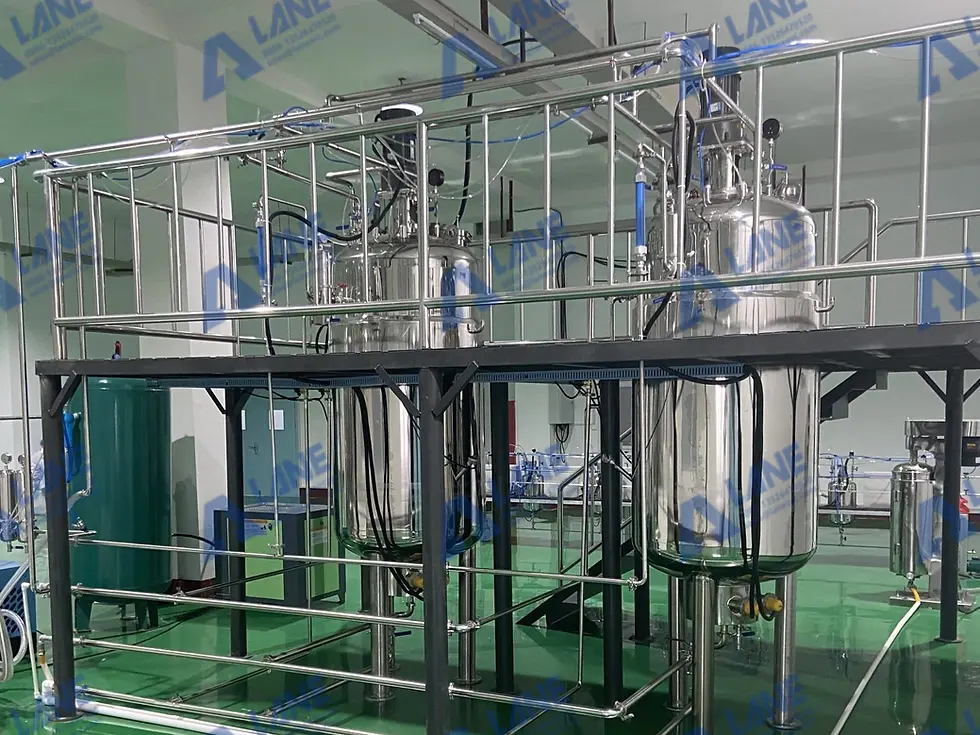Building a High-Efficiency Humic Acid Liquid Fertilizer Production Plant
- Nancy Ju
- Sep 1
- 4 min read
Updated: Sep 16
The global shift toward sustainable farming has created rising demand for organic and bio-based fertilizers. Among them, humic acid liquid fertilizer has proven especially valuable due to its ability to improve soil structure, stimulate plant growth, and enhance nutrient uptake efficiency. For agribusinesses and investors, setting up a humic acid liquid fertilizer production plant is not only an environmental contribution but also a profitable industrial venture.
This article explores the raw materials, processing steps, equipment involved, and the operational benefits of establishing a modern humic acid liquid fertilizer production plant.
Why Choose Humic Acid Liquid Fertilizer?
Humic acid is derived mainly from natural sources such as lignite, leonardite, peat, and weathered coal. When processed into liquid form, humic acid offers the following benefits:
Enhances soil cation exchange capacity (CEC), improving nutrient retention.
Promotes root development and overall plant vigor.
Acts as a natural chelating agent, making micronutrients more available.
Increases seed germination rates and improves stress resistance.
Can be blended with NPK or trace elements to create multifunctional fertilizers.
These advantages make humic acid liquid fertilizer increasingly attractive for modern agriculture, horticulture, and turf management.

Raw Materials for Humic Acid Liquid Fertilizer Production
The foundation of a humic acid liquid fertilizer production line lies in the quality and consistency of raw materials.
Processing Flow of a Humic Acid Liquid Fertilizer Production Plant
Unlike solid organic fertilizer lines, the humic acid liquid fertilizer production line requires chemical extraction, dissolution, filtration, and blending to achieve a stable, high-quality liquid product.
1. Crushing and Grinding of Raw Leonardite
Raw leonardite or weathered coal is first processed using a vertical shaft crusher to reduce the material into fine particles (100–200 mesh). This increases surface area, improving extraction efficiency.
2. Alkali Extraction of Humic Acid
The powdered raw material is transferred into a dissolving tank. Potassium hydroxide (KOH) or sodium hydroxide (NaOH) is added under controlled heating and agitation. This step dissolves humic substances into the liquid phase, forming potassium humate or sodium humate solution.
3. Filtration and Impurity Removal
The mixture passes through a dual filter system (plate and frame filter press, mesh filter, or centrifugal separator). Ash, insoluble matter, and impurities are removed to obtain a clear humic acid solution.
4. Dilution and Formulation Adjustment
The filtered extract is adjusted to the desired concentration by adding deionized water. At this stage, micronutrients (e.g., zinc, iron, manganese) or organic additives (e.g., amino acids, seaweed extract) can be blended in mixing tanks to create specialized liquid fertilizer formulations.
5. Homogenization and Stabilization
To ensure uniform consistency, the liquid passes through a homogenizer. Stabilizers are added to improve storage life and prevent precipitation.
6. Quality Control Testing
Samples are tested for humic acid concentration, pH, solubility, and heavy metal content. Ensuring compliance with agricultural fertilizer standards is critical for market acceptance.
7. Storage and Packaging
The finished humic acid liquid fertilizer is stored in stainless steel storage tanks before being transferred to an automatic liquid packing machine. Packaging can range from 500 ml bottles to 20-liter drums or larger IBC tanks, depending on customer demand.

Benefits of Establishing a Humic Acid Liquid Fertilizer Plant
Value-Added Utilization of Resources: Leonardite and weathered coal, often underutilized, are transformed into high-demand agricultural products.
Customization: Ability to create specialized blends (e.g., humic acid + micronutrients + amino acids).
High Market Potential: Growing demand in organic farming, hydroponics, and sustainable agriculture.
Scalability: Plants can be designed for small-scale local markets or expanded into industrial-scale operations.
Environmental Sustainability: Reduces reliance on chemical fertilizers and promotes soil health.
Why Choose LANE for Your Humic Acid Liquid Fertilizer Production Plant?
LANE has decades of experience in designing and installing liquid fertilizer production lines worldwide. For humic acid projects, we offer:
Tailored Plant Design – customized to raw material quality, production capacity, and target market.
Advanced Equipment – energy-efficient, corrosion-resistant machinery designed for liquid formulations.
End-to-End Service – from feasibility study, engineering design, and equipment supply to installation and training.
Quality Assurance – ensuring your plant complies with international fertilizer regulations.
After-Sales Support – including spare parts, process optimization, and technical consulting.

Looking Ahead: The Future of Humic Acid Liquid Fertilizer
As farmers worldwide shift towards regenerative agriculture and organic farming, the role of humic acid liquid fertilizer production plants will continue to expand. With innovations in extraction techniques, integration of bio-stimulants, and compatibility with precision agriculture, the market is expected to grow rapidly. Today, enterprises investing in this technology position themselves at the forefront of sustainable crop input solutions.
Building a liquid humic acid fertilizer production plant is not merely a manufacturing investment; it is a commitment to sustainable agriculture and long-term soil fertility. From raw material preparation to final packaging, every stage requires reliable equipment and professional engineering design. Partnering with a reliable supplier like LANE not only ensures technical success but also helps maintain a competitive edge in the expanding biological fertilizer market.
Email: sales@lanesvc.com
Contact number: +86 13526470520
Whatsapp: +86 13526470520





Comments